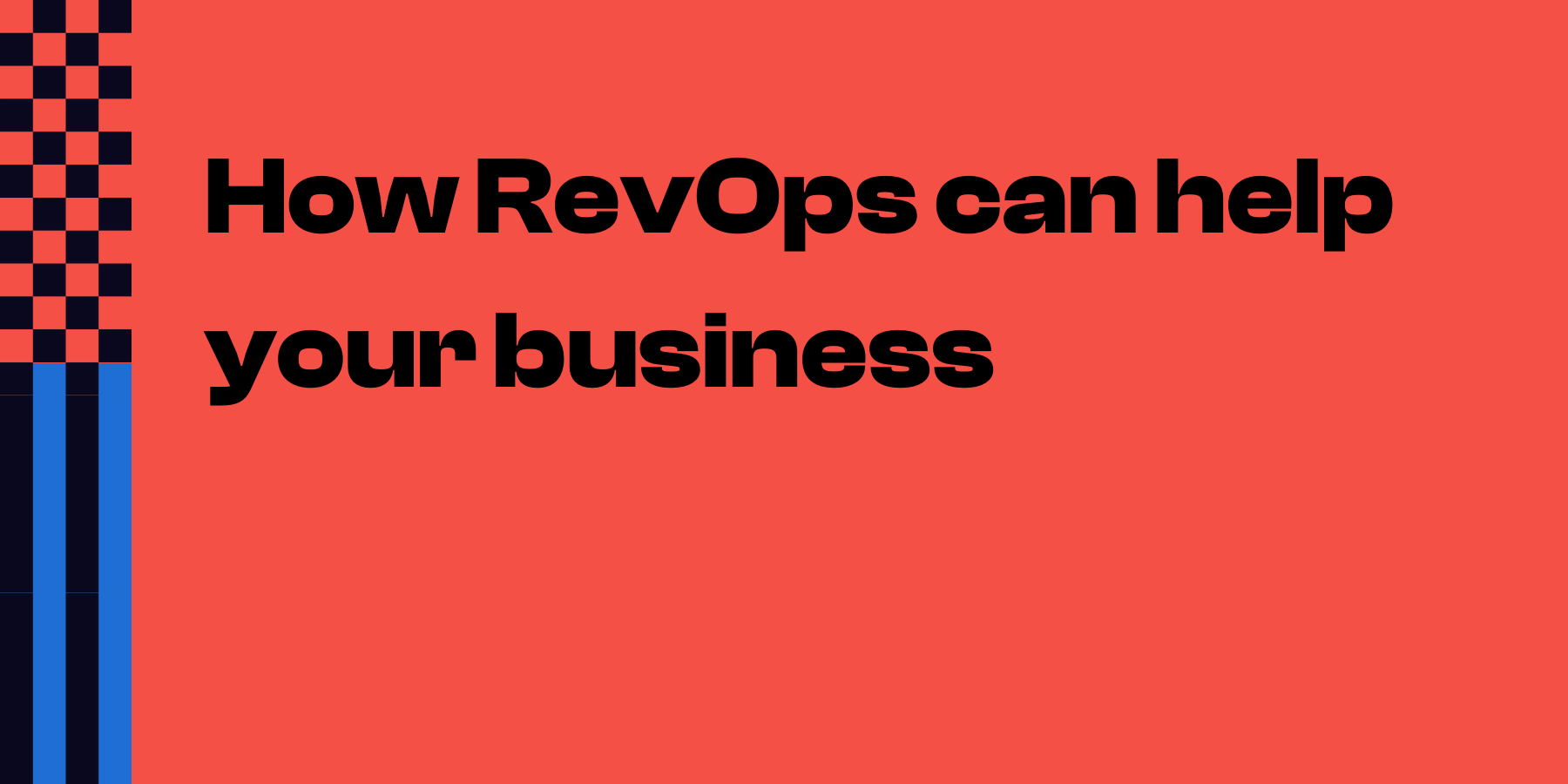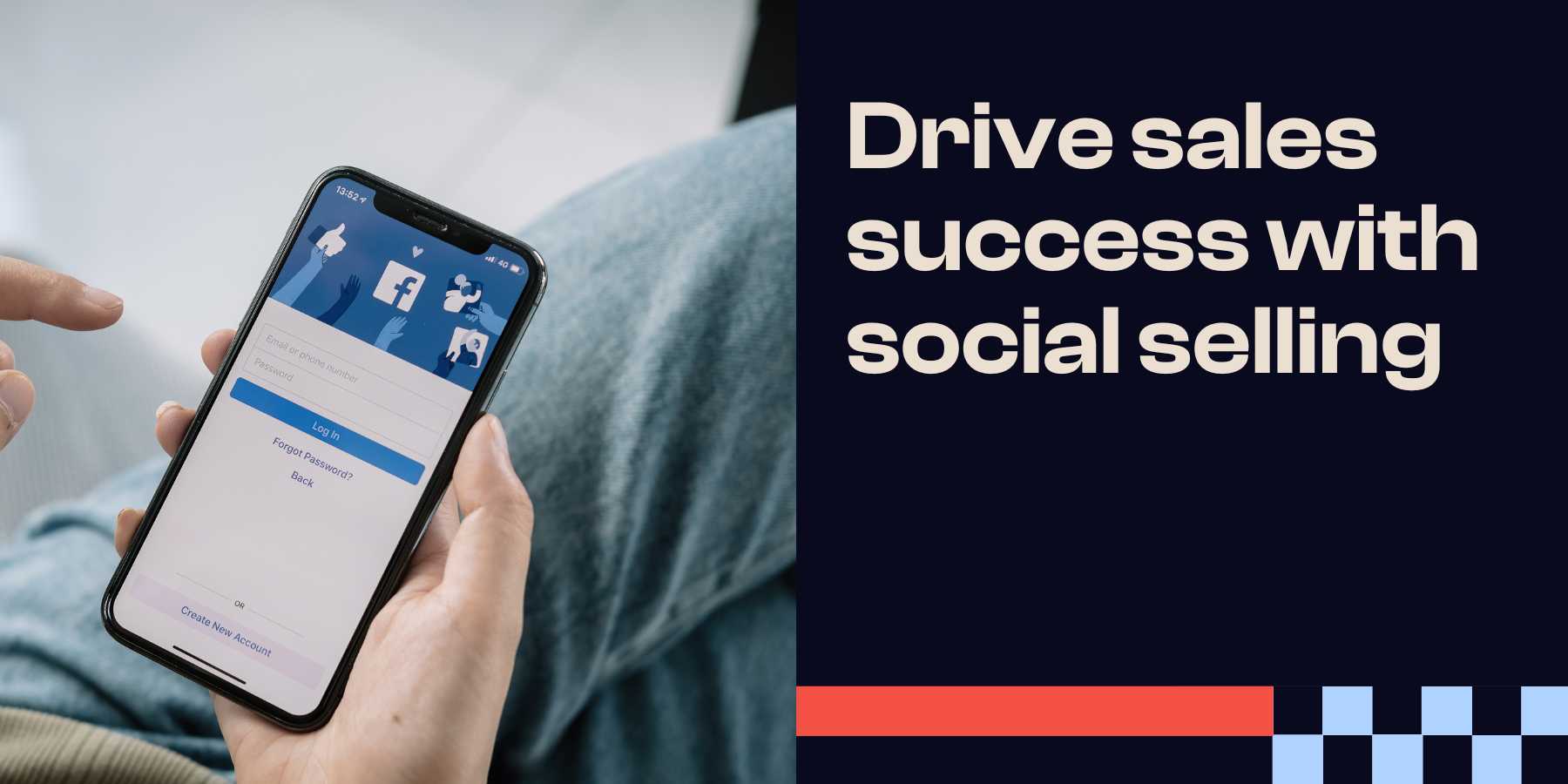How RevOps can help your business

Last updated: 28 October 2022
RevOps is more than just a buzzword. In our latest HubSpot User Group (HUG) event, Ollie from Refuel revealed everything you need to know about RevOps. He dived into detail on what RevOps is, why it’s such a popular topic in modern business, and how it can boost your business’ revenue.
If you want to check out Ollie’s full presentation, you can watch the video below.
What is RevOps?
You might have heard the benefits of RevOps and you’ve probably heard the term, but what does it actually mean?
RevOps stands for revenue operations and it’s the process by which companies align all the operational functions supporting their sales, marketing and customer service operations.
It brings together your revenue-generating activities and acknowledges the role each department plays in that process, helping to make decisions that drive predictable revenue and promote growth.
In short, it’s a business function that aims to maximise your revenue potential.
How is RevOps special?
Traditionally, organisations work like this:
- You have siloed departments with disparate missions, disconnected customer experiences, and disjointed analytics.
- The customer goes from one team to the other in a rough journey they are not at the centre of.
- In your organisation, each department has their own data, their own metrics, their own targets, their own tech stacks and their own processes.
- Each of the handover points turns into a friction point, where data can be lost or not communicated efficiently, and prospects or clients can be lost because of it.
- So one hand doesn’t know what the other is doing, and the final result is that money is left on the table.
The role of the RevOps model is to break down the silos and reduce the friction that may exist between the sales, marketing and customer service departments.
It does so while putting the customer at the centre by aiming to create an enjoyable experience for them - because they are what your business is all about.
So to put it simply, RevOps is your Marketing, Sales and Service departments acting as one powerful team, with one singular mission: to relentlessly drive revenue to grow your business, simply by making the customer journey more enjoyable for the customer, and more efficient.
Should you use RevOps?
Well, firstly, RevOps didn’t appear out of nowhere, it was born out of necessity.
It solves the common problem of having one singular 360 degree view of your customer, instead of having your marketers, sales team and customer service reps operating independently with their individual technology stack.
That leads to data silos, miscommunication between your different teams, a loss of productivity and, eventually, that slows down your growth.
Without RevOps, small issues can spin out of control because no one in your business has a general view of your customer, and how the various systems and processes work together to try and delight that customer.
It is very important, because customers now expect a positive experience from all interactions with businesses. Their expectations are very high, and if you don’t meet those expectations, you will never see them again.
They expect companies to know about previous interactions and inquiries, to know what they’re interested in, without having to repeat details over the course of multiple interactions.
We’ve probably all been in a situation before where you’re on a phone call trying to get a problem solved, you’re transferred to five different people, and each time you have to repeat what you said to the previous person. That’s definitely not a positive customer experience.
It works the same with your customer’s journey. So connecting sales, marketing and service teams through RevOps helps you meet those customer expectations.
The quick benefits of RevOps
RevOps has some great benefits for your business.
Firstly, it creates predictable business growth through accurate metrics. If you have a 360 degree view of your customer, you have data that you can rely on, and base your decisions on. It’s also a lot easier for you to know which prospects are more likely to close, so it’s easier for you to know what to spend your time on.
RevOps creates transparency between teams. Imagine a cross-team meeting where the marketing team talks about their objectives, the sales team talk about theirs, they can’t agree on anything, and at the end of it the whole picture seems unclear to everyone.
When everyone has the same objective and can access the same accurate information, it’s a lot easier to make decisions.
RevOps does that, it creates visibility across teams and creates alignments in all the handoff points. It fosters collaboration as all teams work towards a unified goal and spend less time infighting.
It boosts customer experience by streamlining processes and allowing all teams to be more attentive to customers’ needs. That leads to higher customer retention.
And importantly, RevOps brings you scalability. As your business grows, it goes through major changes, which can create major problems if your teams don’t work together and there is no transparency between them. RevOps makes internal transitions seamless by involving all teams in the whole customer journey.
Do you need RevOps?
So maybe right now you’re thinking - do I need RevOps? Well, there are a few signs that indicate you might.
- Are your departments clashing?
- Is there no coordination between them?
You know trouble’s brewing when your employees from different departments approach you for clarification every single day. For example, if some employees are getting conflicting messages from the head of marketing and the head of sales.
You probably need RevOps if you have a lot of leads dropping off during the handoff between marketing and sales, or you get bad feedback about onboarding and the handoff between sales and service.
RevOps is also a good idea if you are overwhelmed by the number of tools you are using, if you find that every department in your business use their own metrics and data, or if you think that your processes are messy.
The three pillars of RevOps
Process
- Streamline, troubleshoot and fix any issues in the sales process
- Creates a culture of collaboration between teams and limits friction at handover points
- Gives a crystal clear picture of where the growth opportunities are
- Allows each team to focus on doing their job
Tech stack
- Creates a single source of truth
- Aligns your tech stack to provide a clear and accurate story around your revenue pipeline
- Allows your team to see how they impact the pipeline
People
- Put process and technology together and oversee them
- Identify areas of improvement together
- You do not need a dedicated RevOps team
How to get started with RevOps in HubSpot
You can get started with your RevOps strategy following those 4 steps:
- You audit your customer journey to find areas of disconnect between departments.
- You then define and align your lifecycle stage definitions.
- You then build or restructure your maps for customer acquisition, onboarding and customer delight.
- And finally, you regularly analyse your data and get feedback from your teams to optimise and fit your growth strategy.
Luckily for you if you have HubSpot - it has got almost everything you need to manage your customer journey all under one roof.
The audit stage
Here you review the data you have available to try and identify your ideal customer journey, what the main pain points in that journey are, and what pain points each of your departments have.
- You audit all of your existing content, align it with your buyer's lifecycle stage and create a plan to fill in the gaps. What does your customer look for at a specific stage in their journey? Can you currently give it to them? How?
- Audit the technology you use in your marketing, sales, and service departments to make sure they're correctly tracking every movement your potential buyer is making.
- Audit your website (and other digital footprints like ads and socials) to ensure you have every conversion best-practice in place, so there are no barriers to entry for your potential buyers. You don’t want to miss out on an interesting prospect.
The definition stage
Once you have a rough customer journey mapped out, it’s time to dig deep into the detail.
- Evaluate your analytics to ensure you have a full-funnel view of your revenue pipeline and the health of the business.
- Audit your Tech Stack to identify any redundancies across software and tools. Make sure your data is as clean as possible.
- Provide your team with clear definitions and streamlined processes for content marketing, inbound and outbound sales and customer delight.
You can easily do that in HubSpot now that lifecycle stages are fully customisable. Clearly define them, define your deal pipeline stages and how they align with your customers’ lifecycle stage.
Then map everything. What workflows will you need? What properties will you need, and when? Who should be the contact owner at which stage? What’s the most likely reason for drop off at this stage? Any playbooks your team should follow to make sure they get all the information needed?
Review your HubSpot integrations and make sure there are no redundancies. Check that data from those integrations is coming through to HubSpot. HubSpot needs to act as your one source of truth.
The build stage
You’ve done all the hard thinking work, now it’s time to build. That includes:
- Workflows to move prospects through the pipeline and ensure accurate data is collected
- Inbound and outbound sales follow-up emails and task queues
- Reporting dashboards to identify all blocks, bottlenecks and pain points
HubSpot is a very powerful tool here. You can use:
- Workflows - a lot of them, to automate as much as possible
- Lists - for segmenting, targeting and automation
- Use the conversations inbox, both to get and filter sales leads, but also for customer service.
- Create playbooks, tasks and sequences for the sales team.
The optimisation stage
Once you have built everything, the work is not done. You need to constantly optimise your customer journey, and ensure everything is consistent with your growth strategy.
- Set up regular meetings with your departments to make sure the big picture is clear to all, and to get feedback and ideas from them
- Identify your bottlenecks and address them
In HubSpot, use pre-built analytics, custom reporting and feedback surveys to identify cracks in your customer journey.
- Is there a roadblock during hand-off between two departments?
- Are prospects getting stuck or lost at certain points?
- Is important data not coming through as it should?
Again, the new customer journey reports can be helpful here.
HubSpot is fantastic and gives you a mountain of tools to play with, and that ironically leads to one of the biggest issues with HubSpot: It’s easy to be overwhelmed…
- One good idea is to start small and simple, and then lead one special project a month or a quarter to improve your processes and your customer journey.
- November can be segmentation, and December can be lead scoring.
- Over time, you will build a very detailed system. Just don’t forget to review everything from time to time and identify inefficiencies.
Need help getting started?
As HubSpot partners, the Refuel Pit Crew has the knowledge, experience, and tools necessary to develop your own RevOps strategy that’s built for success.
Book a chat with our team below:






